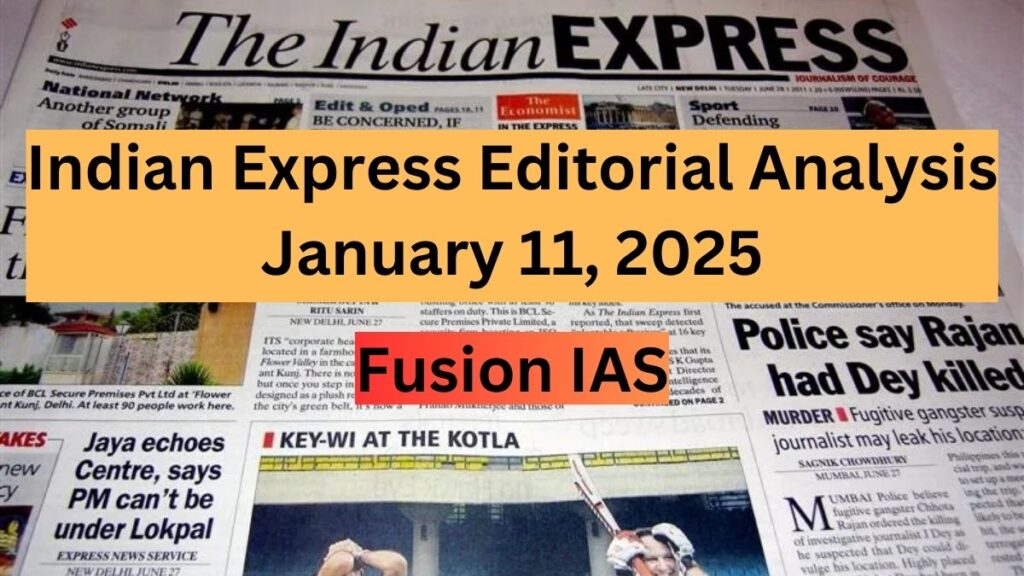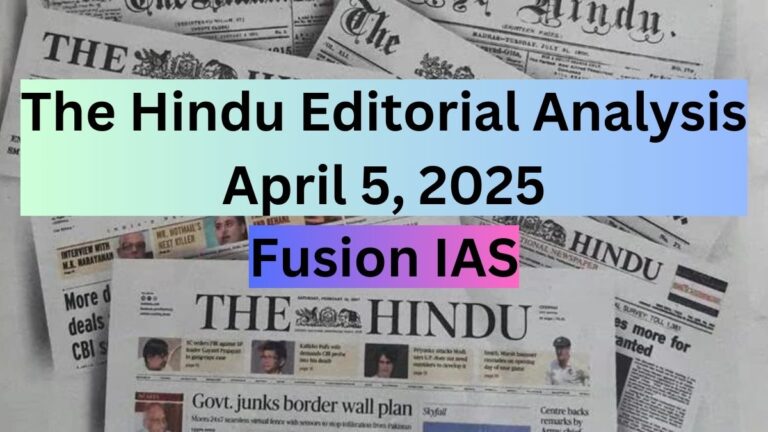
The Indian Express editorial analysis offers valuable insights into current issues affecting India, providing a critical understanding of socio-political and economic matters. For UPSC CSE preparation, such editorials are essential for developing analytical skills, enhancing understanding of governance, and applying knowledge to relevant General Studies topics. Through editorial analysis, aspirants can engage with contemporary issues, assess policy impacts, and build a nuanced perspective required for the examination.
1. Express view on L&T chairman’s remarks: The CEOs who lack of vision, empathy or ideas
The recent remarks by Larsen & Toubro (L&T) Chairman S.N. Subrahmanyan advocating a 90-hour work week reflect a worrying trend in corporate leadership—a lack of empathy and understanding of sustainable productivity. While such statements may intend to inspire hard work and dedication, they disregard the realities of employee well-being, familial responsibilities, and the adverse effects of an overburdened workforce.
Key Issues with Excessive Work Hours
- Detriment to Well-being:
- Studies consistently show that longer working hours lead to burnout, mental health challenges, and physical health issues. Productivity often diminishes beyond a certain point due to exhaustion and declining motivation.
- Lack of Sustainability:
- Excessive work hours may yield short-term results but are unsustainable in the long run. Employees need work-life balance to maintain creativity, resilience, and long-term commitment.
- Global Comparisons:
- Employees in Asian countries already work longer hours (49 hours weekly on average) compared to North America (37.9) and Europe (around 37). This disparity highlights the need for reducing work hours rather than increasing them.
- Socioeconomic Realities:
- Not all employees have the luxury of support systems that allow for unending work hours. Many juggle domestic responsibilities, which unrealistic work demands exacerbate.
- Fallacy of More Hours Equals More Productivity:
- Research debunks the idea that longer work hours inherently lead to greater output. Overwork often results in diminishing returns, errors, and lower quality work.
Challenges for Employees
- Cultural Norms: In India, where even leaders glorify relentless work schedules, resisting such expectations becomes challenging for employees who fear professional stagnation.
- Workplace Pressure: Employees often face a toxic combination of impractical targets, rigid schedules, and inadequate support, leading to a growing mental health crisis.
A Better Approach to Leadership
Leaders should champion:
- Sustainable Work Practices:
- Encourage optimal productivity by promoting work-life balance, flexible schedules, and regular breaks.
- Empathy and Inclusivity:
- Recognize the diverse needs of the workforce, including their personal and familial obligations.
- Evidence-based Strategies:
- Align productivity goals with data that supports balanced workloads as the path to sustainable growth.
Conclusion
Leaders like S.N. Subrahmanyan must move beyond outdated notions of work equating to mere hours logged. Instead, they should embrace a holistic approach that values employees’ well-being, fosters innovation, and builds workplaces that are productive yet humane. Labour, as the International Labour Organisation rightly asserts, is not a commodity—it is the foundation of economic and social progress.
2. Kumbh Mela isn’t just about a religious gathering – it’s a time to look at the larger problems facing us
Cultural and Historical Significance
- Ancient Origins:
- Kumbh Mela originated millennia ago as an assembly of saints and sages for deliberation on dharma and universal welfare.
- Linked to the mythological story of “Samudra Manthan,” where drops of “Amrit” (elixir) fell at Prayagraj, Haridwar, Nashik, and Ujjain.
- Historical Patronage:
- Supported by rulers like the Nandas, Guptas, Cholas, and Pallavas.
- Documented by Chinese traveller Huen Tsang in the 7th century.
- Received recognition from Mughal and British rulers.
- UNESCO Recognition:
- Inscribed in the Representative List of Intangible Cultural Heritage of Humanity in 2017.
- Spiritual Essence:
- Kumbh Mela is not merely a religious gathering but a platform for soul-searching, truth-seeking, and self-discovery.
Philosophical Underpinnings
- Dharma over Religion:
- Hinduism emphasizes continuous exploration for self-discovery rather than rigid belief systems.
- Festivals are opportunities for truth-seeking and purification of the soul.
- Environmental Consciousness:
- Reverence for nature, as emphasized in the Atharva Veda’s Prithvi Sukta: “Mata Prithvi; Putroham Prithvyah” (Earth is my mother, and I am her offspring).
- Kumbh Mela seeks to rekindle humanity’s sacred connection with nature.
Contemporary Relevance
- Mega Human Congregation:
- Maha Kumbh Mela in Prayagraj attracts millions, including international participants and non-Hindus.
- Platform for Addressing Global Challenges:
- Beyond rituals, it serves as a space for deliberation on humanity’s challenges, such as climate change and sustainable development.
- Global Events and Indian Wisdom:
- India’s traditional wisdom, like “Dharmakarta” (stakeholder responsibility), aligns with concepts like stakeholder capitalism promoted by the World Economic Forum (WEF).
- Climate Mitigation and Sustainability:
- The Kumbh Global Summit on Sustainability and Development hosted by the UP government highlights India’s Indic vision for climate solutions.
Criticism and Challenges
- Decline in Contribution to Global Wisdom:
- Hindu traditions have become ritualistic, reducing their engagement with contemporary global challenges.
- Need for Revival:
- Festivals like Kumbh Mela must move beyond rituals to contribute actively to global intellectual and environmental discourses.
India’s Role in Global Leadership
- Eastern Wisdom as Guidance:
- India, through its cultural and philosophical heritage, can provide solutions to economic and environmental challenges.
- Festivals like Kumbh Mela can position India as a leader in shaping a sustainable global future.
Disclaimer:
This analysis is based on the editorial content published in Indian Express and is intended solely for informational and educational purposes. The views, opinions, and interpretations expressed herein are those of the author of original article. Readers are encouraged to refer to the original article for complete context and to exercise their own judgment while interpreting the analysis. The analysis does not constitute professional advice or endorsement of any political, economic, or social perspective.
Follow Fusion IAS


